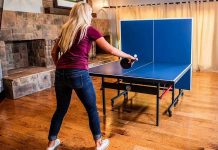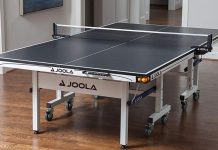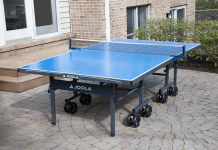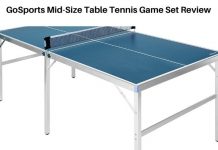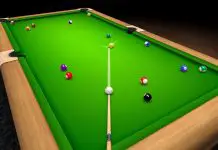Table Tennis is a friendly and entertaining sport suitable for all, but it is not devoid of regular practice rules. This also entails Table Tennis Serving Rules, which have been elaborated in the later sections below.
Table of Contents
Techniques for Good Table Tennis Serving
Before elaborating on the significant Table Tennis Serving Rules, it’s best to be adequately informed about useful Table Tennis Serving techniques.
When we watch table tennis on television, it seems to be a simple sport. It does not involve too much difficulty; Professionals land masterful strokes naturally, which gives us the feeling that anyone who practices a little can emulate them. However, one of the strokes that seems simpler is one of the most complicated: the serve. Professionals often incur two or three double faults per game, and their respective serves rarely go below 160 km / h.
To perform a service, you need very high levels of coordination and precision. However, one of the keys to hitting a good serve is hitting the table tennis ball at the desired height and placement. In fact, on many occasions, you have a hunch that your services will be good when you throw the ball exactly where you wanted. For this reason, we are going to review some very important keys and techniques for good Table Tennis Serving:
Relax Your Arm
It is very important that you are relaxed and focused when serving. Try not to be distracted by the wind, thinking too much about previous mistakes, or with anything unrelated to the service you are about to perform. When you achieve a high concentration, the arm with which you throw the ball is looser, and, in this way, you can make the throw with greater precision.
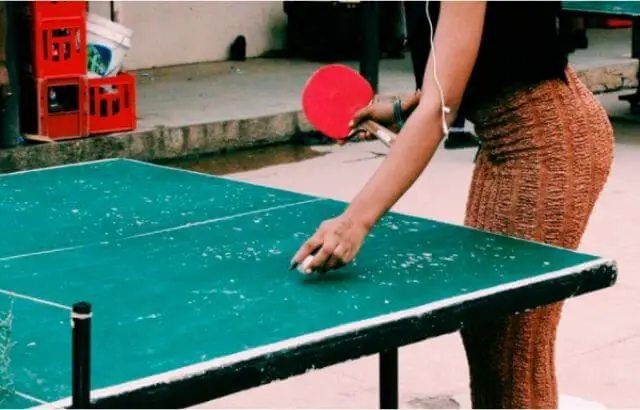
Hold the Ball Properly
To throw the ball well, you must place it at the end of the thumb, index, middle, and ring fingers, with the palm facing up. In this way, you will achieve optimal control in your launch.
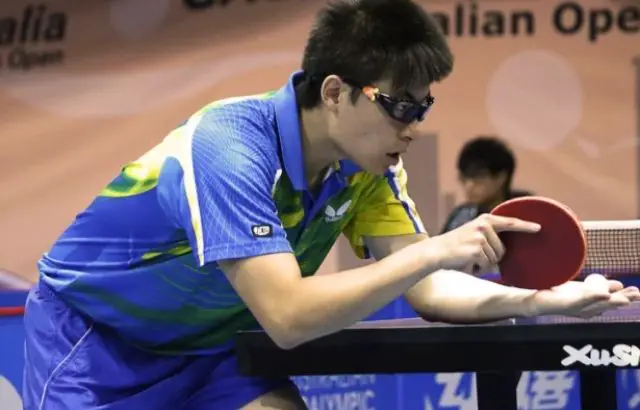
Avoid Unnecessary Movements
Sometimes, during the execution of a service, some players make unnecessary movements before the ball’s launch, which reduces the precision of the service. For this reason, it is important that just when you throw the ball up, your body is as still as possible to avoid inaccuracies.
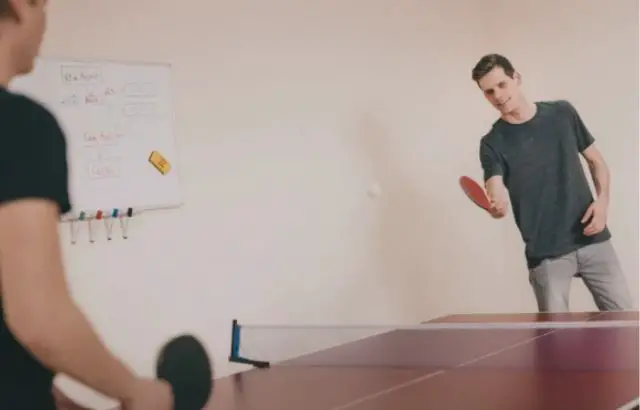
Straighten Your Arm
It is highly recommended that you accompany the ball’s launch with your arm outstretched and that you continue with the movement once the ball has left your hand. You have to generate most of the force with the arm’s movement and not with the wrist; otherwise, you will not place the ball where you want it.
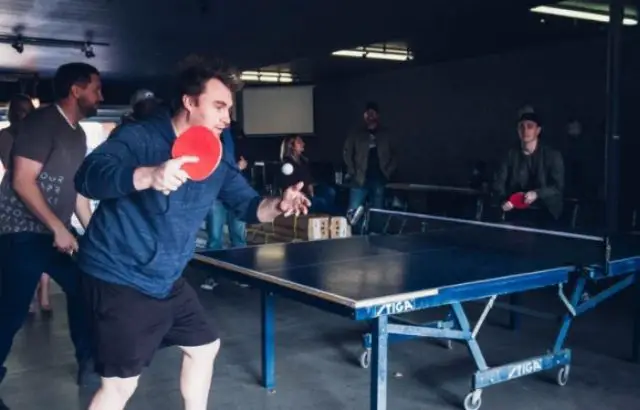
Calibrate the Height
When you throw the ball, try to hit it with much precision at the highest point. At that moment, it is also best that the ball is as static as possible. Hitting the ball up or down can be difficult for you if you do not have a fully calibrated height.
Read More: Best Table Tennis Conversion Top
Consider the Effects
Finally, you must remember the effects. It is not the same to serve flat, cut or topspin. Some teachers and coaches recommend that you visualize an imaginary clock above your head and that you throw the ball to yourself at six, three or eleven o’clock, depending on the type of service you want to perform.
In all, we can speak of the serve as one of the most complex sequences in tennis. Even though there is no foot gaming and travel involved, the tennis serve is undoubtedly one of the movements that demand the most flexibility, relaxation, coordination, and technique. Several elements are to be considered if you want to improve your service. Still, it is important to treat them separately and, therefore, one at a time to achieve real improvements as highlighted above. What is interesting with the service is that the practice can be done alone, it is unnecessary to have a partner, a field is sufficient, and even a wall will do. Just calculate a suitable distance on the wall and draw a line of few inches from the ground to represent the net.
Table Tennis Serving Rules
In general, the Table Tennis service is usually performed by holding the ball on the flat of the hand and throwing it vertically at least 16 cm before hitting it. The strike must be made behind the server’s baseline. And its imaginary extension, in front of the part of the body which is furthest away from the net. The ball must bounce once on the server’s table and then on the receiver’s table. If the ball hits the net or gets hit with a volley by the receiver, it is replayed. Each player makes a serve twice in a row, and the ball also goes into play. As soon as it has been thrown upwards by the server. In summary, the following
Table Tennis Serving Rules must be followed:
When making service, the ball should be placed on the server’s non-clapping palm, the palm should be open and flat, and the ball should be static.
The server must throw the ball up, almost vertically, with his hands. The ball is not allowed to spin, and the ball must rise not less than 16 cm after leaving the palm of the non-clapping hand. Ball must also fall until it is hit and cannot touch any other object at this time.
As soon as the ball is thrown, the server’s free arm must be removed from the gap between the ball and the net. It delimits the gap in between the ball and the net. The net and the vertical projection of its supports.
Once the ball drops down from the highest point of the throw, the server can hit the ball so that the ball touches the area of the team, then passes or bypasses the net device, and then touches the area of the receiver. In a doubles game, the ball should touch the right half of the server and the receiver.
From the moment the ball goes off the server’s palm to the moment the ball is hit, the ball should be above the table’s level and behind the server’s end line.
When the ball comes in contact with the racket, no part of the server or his doubles partner’s body or clothing shall be within or above the virtual triangle formed by the net and the top of the net posts on both sides connecting with the ball. The sight of the receiver should not be obstructed at this time as well.
When an athlete serves, the referee or deputy referee should see whether he is served by the law of serving.
If the referee doubts the server’s correctness, and neither he nor the deputy referee can be sure that the serve is illegal, the referee can warn the server. This can be done if this phenomenon occurs for the first time in a game.
In the same game, if the server’s correctness or his doubles partner is doubted again, regardless of whether it is for the same reason, the receiving side will be awarded a point.
It is the first time, as long as the server fails to serve the ball by the law. He will be penalized by awarding a point to his opponent without warning.
When an athlete cannot strictly abide by certain rules of legal serve due to injury, the referee may decide to exempt him from execution. Still, it must be explained to the referee before the game.
Table Tennis Serving Rules for Doubles
For the serve in table tennis doubles, the same rules apply to single players, but there is one crucial difference. The ball must be played diagonally from the right side of the table to the left of the opposing half of the table from the server. The tabletop is separated lengthways by a centerline that bisects the table into the right and left side.
If the ball jumps to the left on your half of the table or to the right on the opponent’s half of the table, it is a missed serve, and the opponent receives a point. Such an incorrect serve in table tennis circles is described as “landing in the wrong field.”
Each team has two serves in a row. And after two points are played, the right to serve changes. If the set is extended (i.e. at 10:10), the service changes after each point.
Doubles also determine how the service change takes place and who must accept whose service. The following example serves to provide a better explanation:
Players A1 and A2 form a team, players B1 and B2 form the opposing team
- A1 serves on B1 and has two serves
- A1 swaps positions with A2, B1 retains its position
- B1 serves on A2 and has two serves
- B1 exchanges positions with B2, A2 retains its position
- A2 serves on B2 and has two serves
- A2 swaps positions with A1, B2 retains its position
- B2 serves on A1 and has two serves
- B2 swaps positions with B1, A1 retains his position
According to this pattern, the service change is continued in doubles (A1 beats B1 and has two serves, etc.)
At the beginning of the game, the serving team decides who will enter the formation first. After a set has been played or after a change of sides in the decisive set, the service must be made to the opponent who did not accept the ball from this server before or before the change of sides. This ensures that every player on one team serves both players on the opposing team and must accept the service from both. In the example just given, player A1 would then have to serve B2, etc.
Mixed Double
The mixed doubles refer to the gender of the players. A double variant of table tennis, a double team is formed by a male and female player. This form of doubles, the general table tennis rules for doubles are applied as well.
At last, if any player does not respect the above Table Tennis Serving Rules, the referee may be obliged to stop the play and give the point to his opponent.
Frequently Asked Questions
Do you have to serve diagonally in table tennis?
A single-serve does not need to be served diagonally; only a doubles match requires a free throw following the diagonal rules. In singles, there is no restriction on the ball landing. You can serve to the opponent in any area. Singles serve only need to comply with the serving rules; otherwise, it is easy to be judged invalid and served again.
In a table tennis game where the diagonal serve rules are applied to doubles matches, doubles players must serve the ball in their table’s right-hand area according to the diagonal rules to the opponent’s right-hand area.
In summary, with regards to singles table tennis competitions, aside from observing the rules of the serve, the server does not need to obey the rules of the diagonal line to serve. Singles do not have certain restrictions on the landing of table tennis and can serve the opponent in any area. In either singles or doubles matches, in addition to the diagonal serve, you must strictly abide by the rules of table tennis serve; otherwise, the server may be warned by the referee that the serve is invalid and needs to be served again.
How many let serves are allowed in tennis?
There is no limit to the number of lets serves allowed in tennis at any given point.
Are you allowed to touch the table in table tennis?
During active gameplay in table tennis, it is prohibited to touch the table with any part of your body. You are also restricted from moving the table or touching it with anything aside from the racket. If this occurs, a point will be recorded for the opposing player.
What is an illegal serve in table tennis?
In table tennis, the ball must first rest motionless on the palm, then be thrown vertically. And without effect from a height of at least 16 cm as earlier highlighted. The ball must then rebound in the server’s court and then in the receiver’s court. During the service’s execution, the ball must always be behind the baseline and above the level of the playing surface. Also, no part of the body must be between the ball and the net. The service is to be delivered if the ball hits the net.
If the above rules are not followed, the point goes directly to the receiver. And it’s recorded as an illegal serve. If the ball hits the edge of the table, it’s a good serve. But if it hits the side of the table, it’s also an illegal serve.
How do you decide who serves first in table tennis?
In table tennis, the first server is designated by drawing lots.
Can you lean over the table in ping pong?
From the ITTF and ping pong rules, leaning over the table is okay. However, you cannot touch the table with your free hand (non-paddle hand). Also, you cannot move the table during play.
What happens if the ball hits your finger in ping pong?
Concerning ping pong serving rules, any ball that hits you below the wrist or on your finger will not be counted as a foul. On the other hand, you can only hit the ball with the hand holding the paddle.
Can you lose ping pong on a serve?
You can lose on a serve according to ping pong rules if it isn’t done correctly.
Why do table tennis players throw the ball so high?
As the ball throw is the basis of a quality serve, it is important to ensure that you understand the basics. And get the maximum quality from the start of the serve motion. Also, a good server is not one who serves as hard as possible. Rather, he is a player who varies a lot of his ball height and hides his intentions from his opponent.
Before analyzing the major reason why table tennis players throw the ball so high, we would first analyze the 3 types of throws. Three types of throws exist and that the majority of table tennis players make use of:
- The throw to the right of your body: This is usually used for the outside slice serve.
- Throwing straight above, slightly to the right: This is ideal for the flat serve.
- Tossing slightly behind you: This is used for the lift, and generally for the second serve balls.
These 3 types of ball throws of balls usually offer a complete panoply in the service.
However, these 3 types of throws are quite visible, and if the execution of the service’s execution is not perfect. It can turn into an attack ball for your opponent.
If your wish is to confuse your opponent a little more when you serve, you will have to opt for a neutral throw. A bit like throwing it for a flat serve.
This is the launch, which will allow you to do everything. You will have to compensate for this neutral throw by pushing your legs much more widely apart. Giving a more violent rotation to your shoulders, and, most importantly, giving a higher throw of the ball. This gives a good explanation of the inquiry on why table tennis players throw the ball so high. Furthermore, it’s best not to hesitate to train to improve the different phases of throwing. This would go a long way in hiding more of your services, thanks to a neutral throw, as earlier highlighted.
Can you hit the ball with your hand in tennis?
Hitting the ball with your hand in tennis is not allowed. Any player who indulges in this act will lose a point. If the ball comes in contact with his body or anything, he handles other than the paddle. He would also be penalized.
Conclusion
In conclusion, accessibility and simplicity have made table tennis one of the most popular sports in the world today. The game is not only easy to learn, but also extremely exciting. It does not require large financial investments in player equipment. And gear and all that is needed for table tennis is a table, a net, a racket, and a ball, and, of course, the player himself. Today, many people tend to ask this familiar question: “What are the major Table Tennis Serving Rules?”
As with all sports, Table Tennis has rules that must be followed. Whether it is a friendly match at an amateur level or a match in a professional tournament. The rules of table tennis are determined by the ITTF (International Table Tennis Federation). The organization is the main regulatory body of this sport.
From the above highlight, it can be understood that table tennis rules are not difficult to learn compared to other sports. For example, hockey, football, or basketball. Also, to play table tennis, you don’t have to spend a lot of money on equipment and supplies. A racket and a ball cost little, as earlier highlighted, and when it comes to play clothes. You can use a plain tracksuit and sneakers or other suitable things and shoes. These highlighted serving rules in ping pong would also act as a sure guide for all game lovers. Hope you have learned the table tennis serving rules now properly.

Mark is a Bloomberg BusinessWeek-based digital entrepreneur, blogger, and table tennis enthusiast. He is a former professional table tennis player with the career-best USATT ranking of 2689. He is also an ITTF Level 3 certified coach and conducts weekend coaching programs in and around the New York area. Mark is also a pool player by passion. He was first introduced to the game of pool at a very early age by his granddad. He had a natural knack for the game and quickly learned the ropes, and by the time he was 15, he was already participating in local leagues. He aims to make it into the APA league someday! Mark started his own blog by starting Indoor Games Zone, where he loves to share his years of experience with the audience. He covers ping pong, pool, air hockey, shuffleboard, and foosball.
- Ping pong
- Pool
- Air Hockey
- Shuffleboard
- Foosball
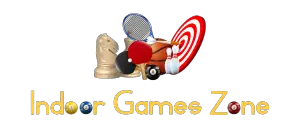
![Stiga XTR Pro Review | 1,559+ Global Ratings (In-Depth Guide) [year] Stiga XTR Pro Review](https://indoorgameszone.com/wp-content/uploads/2021/08/Stiga-XTR-Pro-Review-218x150.jpg)
